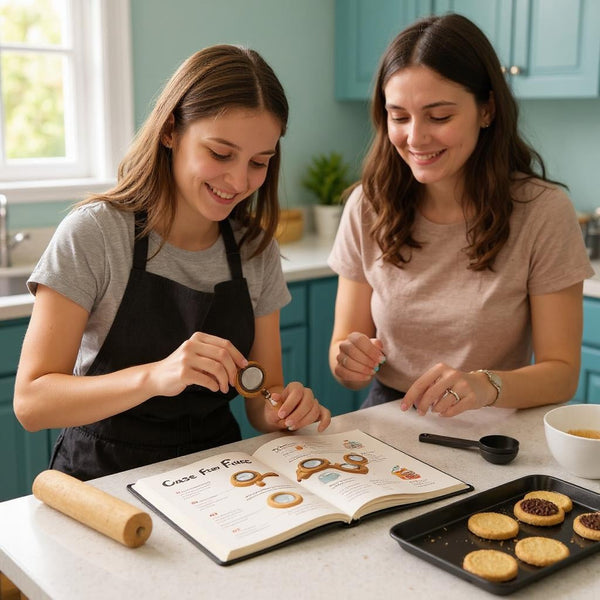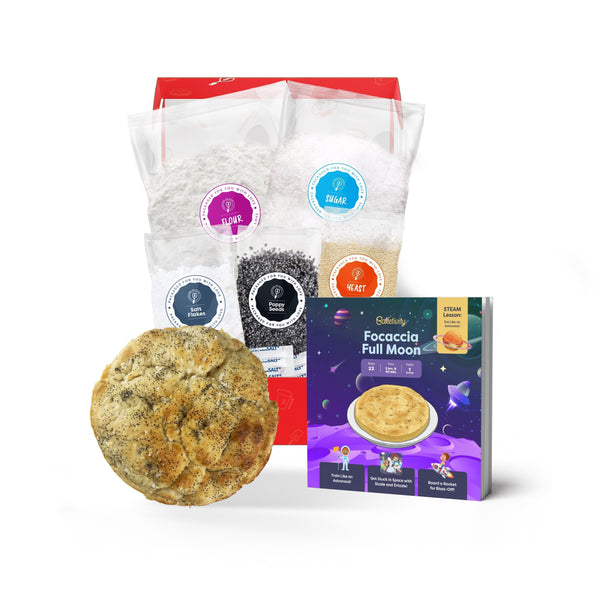We all remember those days when mom or dad would whip up our favorite meals like magic. But what if we could teach our kids to be the magicians in the kitchen? Empowering children to cook for themselves isn't just about creating mini chefs; it's about fostering independence, creativity, and healthy habits that'll last a lifetime.
Think of it as planting a seed of self-reliance that'll grow into a mighty oak of culinary skills. Remember the first time you made toast without burning it? That proud moment can be multiplied tenfold when kids learn to prepare full meals. Plus, who doesn't love the idea of waking up to the smell of pancakes made by your little one on a lazy Sunday morning? Let's explore how we can turn our kitchens into classrooms and our kids into confident cooks.Key Takeaways
- Cooking teaches kids valuable life skills like independence, creativity, and healthy eating habits
- Age-appropriate tasks range from simple mixing for younger children to advanced techniques for older kids
- Creating a kid-friendly kitchen environment with accessible tools and safety measures is crucial
- Involve children in meal planning, grocery shopping, and cooking challenges to build confidence
- Teaching kids to cook offers long-term benefits in nutrition, financial literacy, and self-reliance
The Importance of Teaching Kids to Cook
Teaching kids to cook isn't just about creating mini Gordon Ramsays. It's a recipe for life success! When children learn to whip up meals, they're stirring up a pot of valuable skills that'll serve them well beyond the kitchen. First off, cooking teaches independence. Imagine your little one confidently scrambling eggs for breakfast while you catch a few extra Z's. Blissful, right? By learning to cook, kids take charge of their meals and become self-reliant. They'll be the toast of the town (pun intended) when they head off to college or their first apartment. Cooking also sparks creativity. The kitchen becomes a lab where kids experiment with flavors, textures, and presentations. Who knows? Your budding chef might invent the next big food trend. Spaghetti tacos, anyone? Health-wise, cooking is a game-changer. When kids understand what goes into their food, they're more likely to make nutritious choices. They'll learn the difference between a balanced meal and a sugar bomb disguised as breakfast cereal. But wait, there's more! Cooking teaches math (measuring ingredients), science (chemical reactions), and even geography (exploring cuisines from around the world). It's like a delicious, hands-on lesson in multiple subjects. Let's not forget about family bonding. Cooking together creates memories sweeter than any dessert. Remember the first time you helped in the kitchen? The pride of presenting a slightly lopsided cake to your family? That's the kind of joy we're talking about. So, are you ready to turn your kitchen into a classroom? What's the first recipe you'll tackle with your mini chef? Maybe start with something simple, like pancakes. Just be prepared for a floury floor and giggles galore!Essential Kitchen Skills for Children
Teaching kids essential kitchen skills empowers them to become confident cooks. Let's explore two fundamental areas that every young chef should master.Basic Knife Skills
Knife skills are the cornerstone of cooking. We start by teaching kids how to hold a knife safely, using child-friendly knives with dull edges. It's like learning to ride a bike - practice makes perfect! We guide them through simple cutting techniques, such as the "claw" grip for fingers and the "rock chop" for herbs. Kids love slicing soft fruits like bananas or strawberries, which builds their confidence. As they progress, we introduce more challenging tasks like dicing vegetables. Remember, patience is key - we celebrate small victories and laugh off any mishaps. Who hasn't accidentally created misshapen carrot coins at first?Understanding Kitchen Safety
Kitchen safety is as important as the cooking itself. We teach kids to treat the kitchen like a science lab, where following rules keeps everyone safe. Hot surfaces are like "danger zones" - we show them how to use pot holders and oven mitts. Washing hands becomes a fun ritual, maybe with a silly 20-second song. We explain why certain foods need to be cooked thoroughly, likening it to defeating "germ monsters." Kids learn to clean as they go, turning tidying into a game. And let's not forget the classic "no running in the kitchen" rule - we joke that it's not a racetrack, even if we're racing to finish dinner! By making safety engaging and relatable, kids internalize these crucial habits. What's your favorite kitchen safety tip to share with young cooks?Age-Appropriate Cooking Tasks
 Matching cooking tasks to a child's age and ability is crucial for a safe and enjoyable experience. Let's explore suitable cooking activities for different age groups.
Matching cooking tasks to a child's age and ability is crucial for a safe and enjoyable experience. Let's explore suitable cooking activities for different age groups.
Simple Recipes for Younger Kids
Younger kids thrive with hands-on, easy-to-follow recipes. Here are some age-appropriate tasks:- Spreading: Peanut butter on toast or jelly on crackers
- Mixing: Stirring pancake batter or cookie dough
- Assembling: Making fruit kebabs or simple sandwiches
- Measuring: Scooping flour or pouring liquids into measuring cups
- Decorating: Adding toppings to pizzas or frosting cupcakes
Advanced Techniques for Older Children
As kids grow, so do their cooking skills. Older children can handle more complex tasks:- Chopping: Using proper knife techniques for vegetables
- Sautéing: Learning to cook vegetables in a pan
- Baking: Following recipes for cakes, cookies, or bread
- Grilling: Assisting with outdoor cooking (under close supervision)
- Menu planning: Creating balanced meals and shopping lists
Creating a Kid-Friendly Kitchen Environment
We've all heard the saying, "The kitchen is the heart of the home," but for kids, it can sometimes feel like a forbidden fortress. Let's change that! Creating a kid-friendly kitchen isn't just about lowering countertops or buying colorful utensils. It's about making the space inviting, safe, and exciting for our little chefs.Organizing Kitchen Tools and Equipment
Ever played that game where you close your eyes and try to find something in a messy room? That's what it can feel like for kids in a disorganized kitchen. We've got some tricks up our sleeves to make kitchen tools accessible and fun:- Use clear, labeled containers for ingredients
- Place kid-friendly tools in lower drawers
- Create a "kids' corner" with their own equipment
- Install hooks at child-height for aprons and oven mitts
Safety Measures and Precautions
Safety first, but who says it can't be fun? Think of kitchen safety like a game of "Hot Lava," but instead of imaginary lava, we're avoiding real dangers. Here's how we can make safety engaging:- Use colorful non-slip mats around cooking areas
- Install childproof locks on cabinets with hazardous items
- Create a "safety zone" marked with tape for kids to stand in while observing
- Teach a catchy song about hand washing and food safety
Creating Designated Cooking Areas for Kids
Just like how we have our favorite spot on the couch, kids need their own space in the kitchen. Let's carve out a special area where they can flex their culinary muscles:- Set up a low table or counter for prep work
- Use a sturdy step stool for access to higher surfaces
- Designate a specific cabinet or drawer for kids' cooking tools
- Create a "tasting station" for adventurous eaters
Meal Planning and Grocery Shopping with Kids
Ever tried herding cats? Well, meal planning with kids can feel just as chaotic – but twice as fun! Let's dive into the wacky world of grocery lists and menu ideas with our little chefs.Involving Kids in Meal Planning
Getting kids involved in meal planning is like planting a seed of culinary curiosity. Start by asking, "What's your dream dinner this week?" You might be surprised by their creative answers! Here's how to make it a family affair:- Host a weekly "menu meeting" where everyone shares ideas
- Create a family cookbook with favorite recipes
- Use a colorful calendar to plan meals visually
- Let kids choose a new fruit or veggie to try each week
- Encourage theme nights like "Taco Tuesday" or "Stir-Fry Friday"
Teaching Kids About Budgeting and Nutrition
Budgeting and nutrition can be as dry as overcooked chicken, but not when you make it a game! Try these tricks:- Give kids a budget for their chosen meal
- Play "nutrition detective" to find healthier alternatives
- Create a rainbow challenge to include colorful fruits and veggies
- Use apps or websites to compare prices and nutritional info
- Let kids clip coupons or find digital deals for extra savings
Making Grocery Shopping Fun and Educational
Turn the grocery store into a learning playground! Here's how:- Scavenger hunt: Find items by color, shape, or letter
- Math practice: Calculate prices per unit or weigh produce
- Geography lesson: Identify where different foods come from
- Taste test: Sample new fruits or veggies in the produce section
- Reading practice: Decipher ingredient lists and nutrition labels
Building Confidence Through Cooking Challenges
Cooking challenges are a fantastic way to boost kids' confidence in the kitchen. They're like mini-adventures that turn everyday ingredients into exciting experiments. Remember when you first learned to ride a bike? That same thrill of accomplishment comes with mastering a new recipe or technique. We've found that setting up cooking challenges can be as simple as a pancake flip-off or as elaborate as a family bake-off. Why not try a "mystery ingredient" challenge? It's hilarious watching kids try to figure out what to do with a kohlrabi or star fruit! Here are some fun cooking challenges to try:- Flavor fusion: Combine two unexpected ingredients
- Color contest: Create a meal using only foods of one color
- No-heat challenge: Prepare a dish without using the stove or oven
- Alphabet adventure: Cook a meal where all ingredients start with the same letter
- Setting a time limit to add excitement
- Offering a special prize or reward for participation
- Documenting the process with photos or videos
- Inviting friends or family to judge the results




